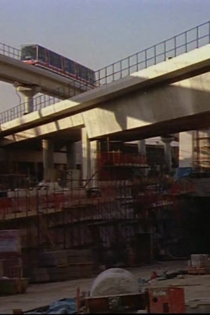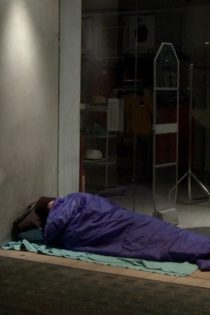
William Raban
2021Thames Film
William Raban
John Hurt
This movie is an experimental documentary following the flow of the Thames out of London to the sea. It has a narration from John Hurt that takes the form of reading old manuscripts, books and news articles, and also a posthumous narration from poet TS Eliot reading from his own work, The Dry Salvages from the Four Quartets. Engravings, paintings, and archival film are juxtaposed against the contemporary footage, including Pieter Breughel the Elder's "The Triumph of Death" (c.1562) from the Prado Museum.
Thames Film
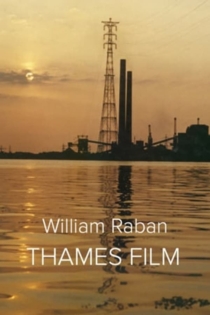
Autumn Scenes
William Raban
“The film is in three parts, each one exploring the fragmentary experience of perception by resorting to various forms of temporal and spatial dislocation. ‘Concrete Fall’ and ‘Fergus Walking’ are both filmed from a moving viewpoint, and the camera motion is ‘converted’ through simple editing and printing procedures to register subtle depths in space, the layering between foreground and infinity. In ‘Packeted Passages’ I filmed with two synchronized cameras and fused the two views in the printing stage into one disintegrated screen space.” – William Raban
Autumn Scenes
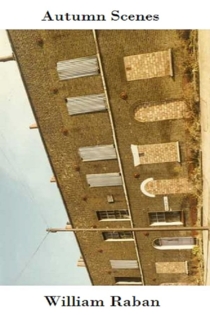
River Yar
William Raban, Chris Welsby
A camera recorded one frame every minute (day and night) for two separate three-week periods in autumn and spring. The film is shown on two adjacent screens, each having a soundtrack that was recorded on a sampling basis. The left hand screen was shot at the autumn equinox and the right-hand screen at the spring equinox. The structure of the film is based on the rotation and tilting of the earth as we pass from summer to winter and back. The centre of the film coincides with the equinox and is the point at which day and night are the same length on both the left and the right screen.
River Yar

Colours of this Time
William Raban
Whilst working on previous time-lapse films, I found that colour film tended to record the actual colour of the light source rather than local colour when long time exposures were used. Using this phenomenon, Colours of this Time records all the imperceptible shifts of colour temperature in summer daylight, from first light until sunset.
Colours of this Time
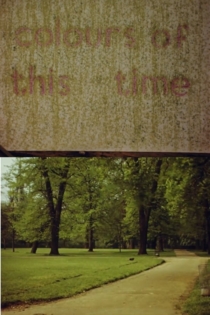
Angles of Incidence
William Raban
“This film is the starting point of a continuous investigation into ways of presenting cubist space in terms of the flat surface of the film screen. The film image is the view through a window, the window-frame providing a constant spatial reference point, as the view beyond is modified by a series of major and minor variations in camera viewpoint. The film is presented un-edited just as it was filmed in the camera. The patterns of camera movement are not the product of a pre-given shooting script, but rather they evolved actually at the time of filming.” – William Raban
Angles of Incidence
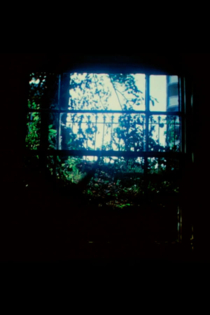
Broadwalk
William Raban
Originally, this was a four-minute time-lapse film that was shot continuously over a twenty-four-hour period. The camera was positioned on a busy pathway in Regent's Park, and recorded three frames a minute. The shutter was held open for the twenty-second duration between exposures, so that on projection, individual frames merge together making the patterned flows of human movement clearly perceptible. The time-lapse original was then expanded by various processes of re-filming to reveal the frame-by-frame structure of the original. – William Raban
Broadwalk

After Lumière – l'Arroseur arrosé
Malcolm Le Grice
William Raban, Judith Le Grice
"Like all the works I have done which refer directly to another artist, After Lumière… is not directly 'about' the Lumière original. It is the starting point for an investigation. In this case it is an investigation into consequentiality, or at least the significance of sequentiality in the construction of meaning and concept. As such, the film encroaches on 'narrative' cinema, but in a way which treats narrativization as problematic, not transparent." - Malcolm Le Grice
After Lumière – l'Arroseur arrosé

About Now MMX
William Raban
Shot from the 21st floor of the iconic Balfron Tower, the film takes in the city of London below. Filmed mostly in time-lapse with the camera tracking across this aerial field of view, the intention is to create a cinematic map that exposes the neural networks of the post-modern metropolis; producing a film that reveals the workings of London’s nervous system.
About Now MMX
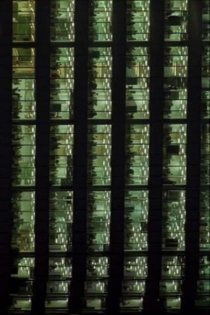
Time and the Wave
William Raban
The paradox of the present as a time that cannot be reflected upon until it has already become past, seems consistent with the idea of thinking about the passage of time as the movement within a wave, where the individual particles of water remain static despite an illusion of movement upon the surface. Might not the succession of events in daily life pertain to a similar form of illusory movement? Time and the Wave engages with this paradox by focusing on key London events filmed in 2012 and 2013: the opening of Westfield Shopping Centre at Stratford, the Saint Paul's Occupy movement, the Queen's Jubilee Thames pageant and the funeral of Margaret Thatcher to expose the condition of this country in the time of crisis of late capitalism.
Time and the Wave

London Republic
William Raban
Made two months in advance of the referendum to decide whether the UK should remain within or leave the European Union, speculates on the outcome of the vote. This is a satirical fairytale – a political provocation that invites the audience to guess the outcome of the referendum to decide London’s fate
London Republic

After Manet, After Giorgione – Le Dejeuner sur l'Herbe or Fete Champetre
Malcolm Le Grice
Malcolm Le Grice, Gill Eatherley
Le déjeuner sur l’herbe is simultaneously perceived from four different camera positions in a work which engages with the pro-filmic in order to question documentation, illusion and the film viewing process.
After Manet, After Giorgione – Le Dejeuner sur l'Herbe or Fete Champetre

Breath
William Raban
Shot in a remote part of Dartmoor, Breath is structured around a precise score. Three people are each given a camera loaded with 100ft of Kodachrome film and instructed to walk away from a tape recorder that has been placed within the landscape. The camera operators’ breath and whistling become a measure for the duration of the shots as they film their journey.
Breath

